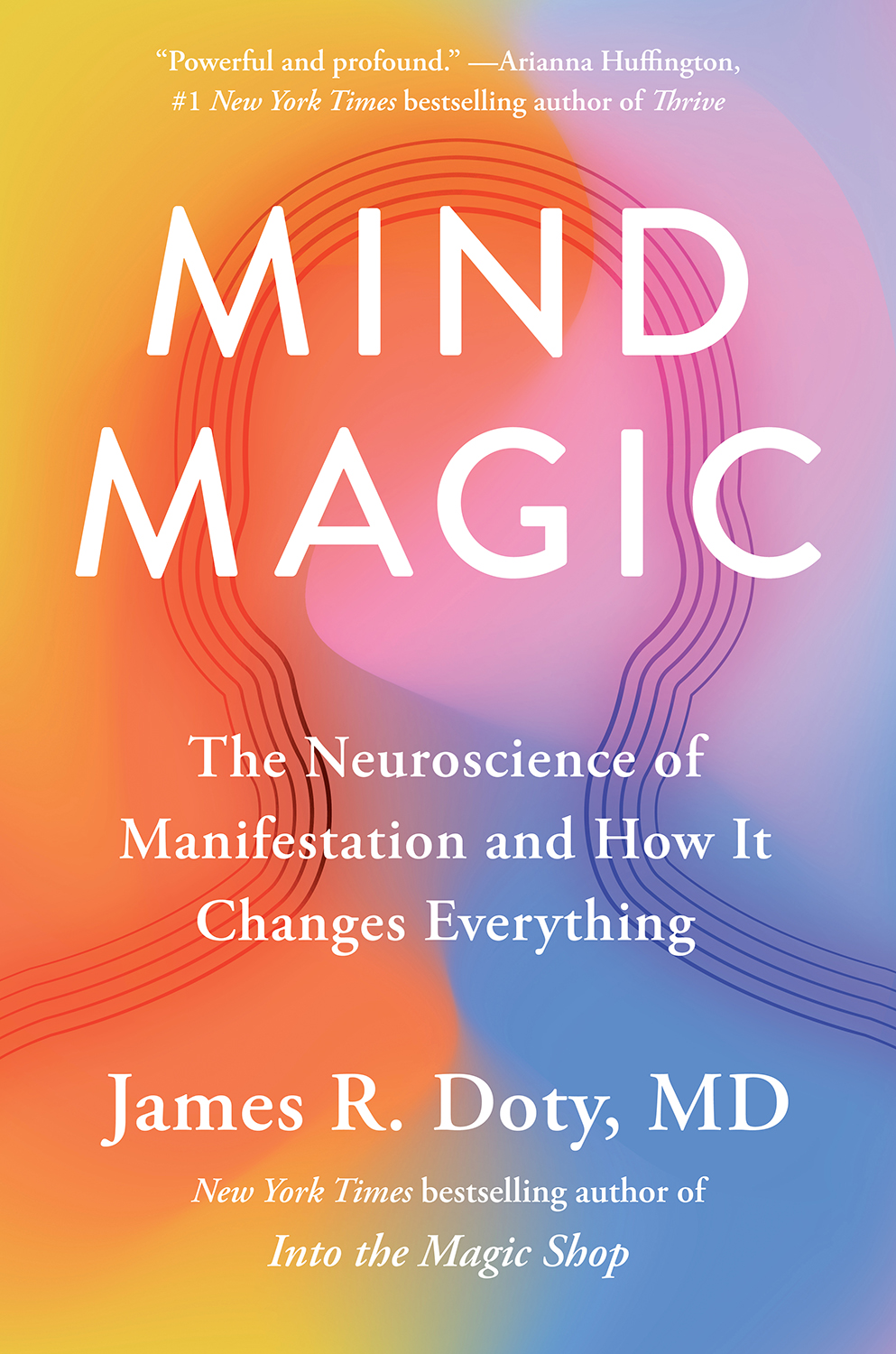James Doty starts his new book, Mind Magic: The Neuroscience of Manifestation and How It Changes Everything (Avery, 2024), with an abrupt and clear statement to readers: The universe doesn’t care about you.
It’s unexpected coming from a world-renowned neurosurgeon and founding director of Stanford’s Center for Compassion and Altruism Research and Education, of which His Holiness the Dalai Lama is the founding benefactor.
But it’s attention grabbing, and attention is what Doty, who is also an adjunct professor in the Stanford School of Medicine, wants his readers to think about. When our attention is intentionally focused on what we want and why, change is possible, Doty says.
“It’s not about the universe, it’s about you,” he goes on to tell his readers.
According to Doty, our attention can be redirected in a way that can change our brains – literally. With the right practice, we can strengthen our brain’s gray matter, the neural tissue that helps us learn and grow and ultimately leads us to realizing our potential.
In its most basic terms, this is what manifestation is all about.
The power of our own mind
Mind Magic builds from Doty’s previous book, a New York Times and international bestseller Into the Magic Shop: A Neurosurgeon’s Quest to Discover the Mysteries of the Brain and the Secrets of the Heart (Avery, 2017), his memoir about how, as a boy living in poverty in the rural desert town of Lancaster, California, he first learned about manifestation from a woman named Ruth.

For 12-year-old Doty, it felt like the universe didn’t care what happened to him. But through Ruth’s teachings – what she called “real magic” – he turned his life around, becoming a successful neurosurgeon and investor. But when Doty’s world came crashing down some three decades later, he realized what he wanted was not what he needed.
Doty has since devoted his life to sharing what he’s learned about manifestation, which he defines as the process of embedding our intentions into our subconscious.
As Doty explains in Mind Magic, the lessons Ruth taught him – which included exercises in deep breathing and replacing negative thoughts with positive ones – can help calm down our stressed-out nervous systems. When we are able to switch from engagement of our sympathetic nervous system, or the “flight, fight, or freeze” mode, to our parasympathetic nervous system, or the “rest and digest” mode, we can begin to think more clearly and compassionately about ourselves and the world around us.
Shifting the body into the parasympathetic state can be difficult in a world where continual stimulation has put our nervous systems under constant stress. Human evolution hasn’t kept up with the rapid technological and social advancements made over the past two centuries.
One example Doty points to is the staggering statistic of how much time we spend on our smartphones: The average American spends 1,460 hours – or 91 waking days – per year on their mobile device, which research shows is designed to captivate our attention in addicting ways.
As Doty puts it, our attention has become “hijacked.” The subconscious – which influences what our conscious mind attends to – is unable to process all it receives. As a result, sometimes critical information gets rerouted into systems of automatic processing.
Distracted, we miss crucial opportunities when they arise. But if our intention is embedded in our subconscious, Doty explains, our brains become primed to notice them.
What manifestation does to our brain
What manifestation does is help create new neural pathways in our brain. Some scientists call this process neuroplasticity, but Doty likens it to a “superpower.”
“This superpower, molded by experience, repetition, and intention, enables the brain to form new circuits, and to prune away old ones which no longer serve us,” Doty said.
Mind Magic includes a series of exercises – including a 6-week program – to help people manifest effectively.
Many of the exercises start with relaxation as a first step to shift the body into a parasympathetic state where we have more control over our bodies and mind. Once in a relaxed state, Doty suggests visualizing your intention for five minutes. Then write it down and repeat it out loud to yourself, daily. Repetition is key as it’s one of the ways new neural pathways are created in the brain.
Over time, our brains become reprogrammed to reward us when we advance toward our goal.
As Doty makes clear, manifestation is not about pursuing a self-serving interest – that will never make you happy.
Being too self-focused is also bad for our brain and body, Doty cautions. In contrast, focusing on others activates the parasympathetic nervous system, which helps with our overall mood and well-being – all while making manifestation more efficient too.
“The Dalai Lama has said, ‘If you want to make others happy, be compassionate. If you want to be happy, be compassionate,” Doty told Stanford Report. “Fundamentally, this intersects with manifestation. When you are caring and focused on others, this actually is when your brain networks function at their best.”
In addition, manifestation is not to be mistaken for magical thinking. We still have to put in the hard work to make the changes we want into reality. But it’s a useful, and at times necessary, first step in an ongoing process.
“We may have come to believe that our inner power is limited by our external circumstances or our past conditioning,” he said, “but in reality, it starts in our own minds.”